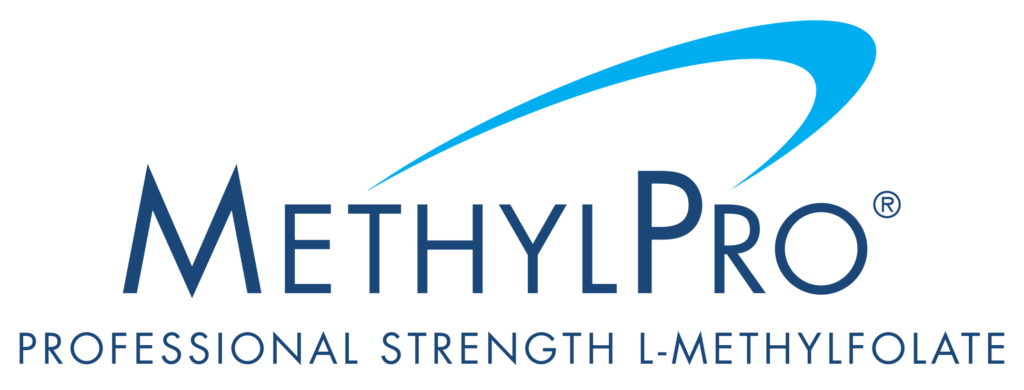How DNA and Its Expression Shape Health
There is a biological element of the common discussion of “nature vs. nurture”. It can be explained somewhat by two scientific fields: genetics vs epigenetics. Both involve the fundamental molecules of life, but represent different layers of influence on how our bodies function. On the most basic level, your genetics are the blueprint you inherit from your parents. Epigenetics shape how that blueprint is carried out through your lifetime, as the result of exposures and experiences.
While “epigenetic” has rightfully become a buzzword around exposure to toxins, the word itself does not represent a threat to your health. Our cells rely on positive and protective epigenetic modifications for development, healthy aging, and to adapt to the world around us [1]. DNA methylation plays a critical role in supporting these positive epigenetic processes. It is important to be aware of how MTHFR genetics and epigenetics relate to one another.
Genetics: The Blueprint
Genetics refers to the study of genes: sequences of DNA that serve as instructions for building proteins. You inherit these genetic sequences from your parents, and unless a mutation occurs, your DNA remains essentially unchanged throughout your life.
Think of your genome as the master blueprint. It includes all of the code needed to produce every protein your body might ever require. This includes everything from enzymes to hormones to structural components of cells. While your entire gene code exists in every cell, each cell only needs to read and carry out small sections of that code. For example, while the codes for eye and skin pigment exist in every cell, those sections of code are irrelevant to most of the cells in the body.
Variants in this blueprint (sometimes called polymorphisms) can influence how well certain biological processes run. The MTHFR gene is one such example. MTHFR codes for the enzyme methylenetetrahydrofolate reductase, which plays a key role in processing folate and supporting methylation [2]. Methylation is a biochemical process essential to DNA repair, neurotransmitter production, and detoxification [2].
Certain common MTHFR variants, such as C677T and A1298C, are slightly modified versions of the code that reduce the efficiency of the translated enzyme [2]. This is purely a matter of genetic inheritance. If you possess these variants, your enzyme operates at a lower baseline capacity compared to the “wild-type” version. The code you inherit is the same in every cell, so if you have inherited a polymorphism, every cell responsible for synthesizing MTHFR enzyme is translating from the same code, making a less efficient enzyme. If you’d like to read more about the differences in hetero- vs homozygous MTHFR variants, click here.
Epigenetics: The Change Orders
As mentioned, while genetics provide the blueprint, epigenetic factors determine how that blueprint is read and carried out by the body. Epigenetics directly translates to “above the genome”, and involves chemical modifications (such as DNA methylation) that affect gene expression without altering the underlying DNA sequence. These modifications act like volume knobs for genes, turning them on or off completely, or modulating their activity.
To continue with the building/blueprint metaphor: changes in the availability of materials and resources, or accidents and exposure to the elements, will all have an effect on a finished project. Similarly, epigenetic modifications are dynamic. They can change in response to:
- Nutrition
- Stress
- Sleep patterns
- Environmental toxins
- Exercise
- Smoking, drinking alcohol, and other toxin ingestion [1,3]
For example, if you have inherited an MTHFR variant coding for a less efficient enzyme, and are experiencing low levels of functional folate because of it, DNA methylation throughout the body may be suboptimal, with downstream epigenetic consequences [4]. However, carrying the normal or “wild-type” MTHFR variant with normal enzyme efficiency, does not guarantee healthy DNA methylation. Your methylation status depends not just on your genes, but also on your epigenetic landscape. Numerous nutrients are necessary for healthy methylation throughout the body. You must consume balanced nutrition to support them, regardless of your genetics [5].
Lifestyle factors that support optimal epigenetic regulation can help mitigate the effects of less-than-ideal genetics. Conversely, poor lifestyle choices can worsen the functional expression of your healthy genes.
Genetics vs. Epigenetics in MTHFR
Researchers studying MTHFR have found that both genetic and epigenetic factors influence health outcomes related to this gene.
Consider homocysteine levels. Elevated homocysteine is often observed in individuals with MTHFR variants, but not always. Studies show that:
- People with the same MTHFR genotype can have vastly different homocysteine levels depending on diet, stress level, and other epigenetic factors [2,4].
- Nutrient status (such as B vitamins) can influence DNA methylation patterns, affecting how efficiently methylation pathways run, even in those with MTHFR variants [4].
- Epigenetic changes over time may compensate for or exacerbate genetic predispositions [3].
In short, your MTHFR status tells part of the story, but epigenetic regulation shapes how that story plays out in real life.
Final Thoughts
Understanding the interplay of genetics vs. epigenetics empowers you to take a more nuanced view of your health. Your DNA provides valuable insights, but it is not your destiny. Through thoughtful lifestyle choices, like nutrition, stress management, toxin avoidance, and healthy sleep patterns, you can influence how your genes are expressed and how your body functions.
For those with MTHFR variants, staying curious about both your genetic blueprint and your epigenetic environment offers a promising path toward optimal wellness.
References
- https://www.mdpi.com/1422-0067/25/7/4036#B12-ijms-25-04036
- https://www.mdpi.com/2073-4425/16/4/441
- https://onlinelibrary.wiley.com/doi/full/10.1111/joim.13533
- https://pmc.ncbi.nlm.nih.gov/articles/PMC7960825/pdf/13224_2020_Article_1374.pdf
- https://www.tandfonline.com/doi/full/10.31887/DCNS.2010.12.1/cptak

